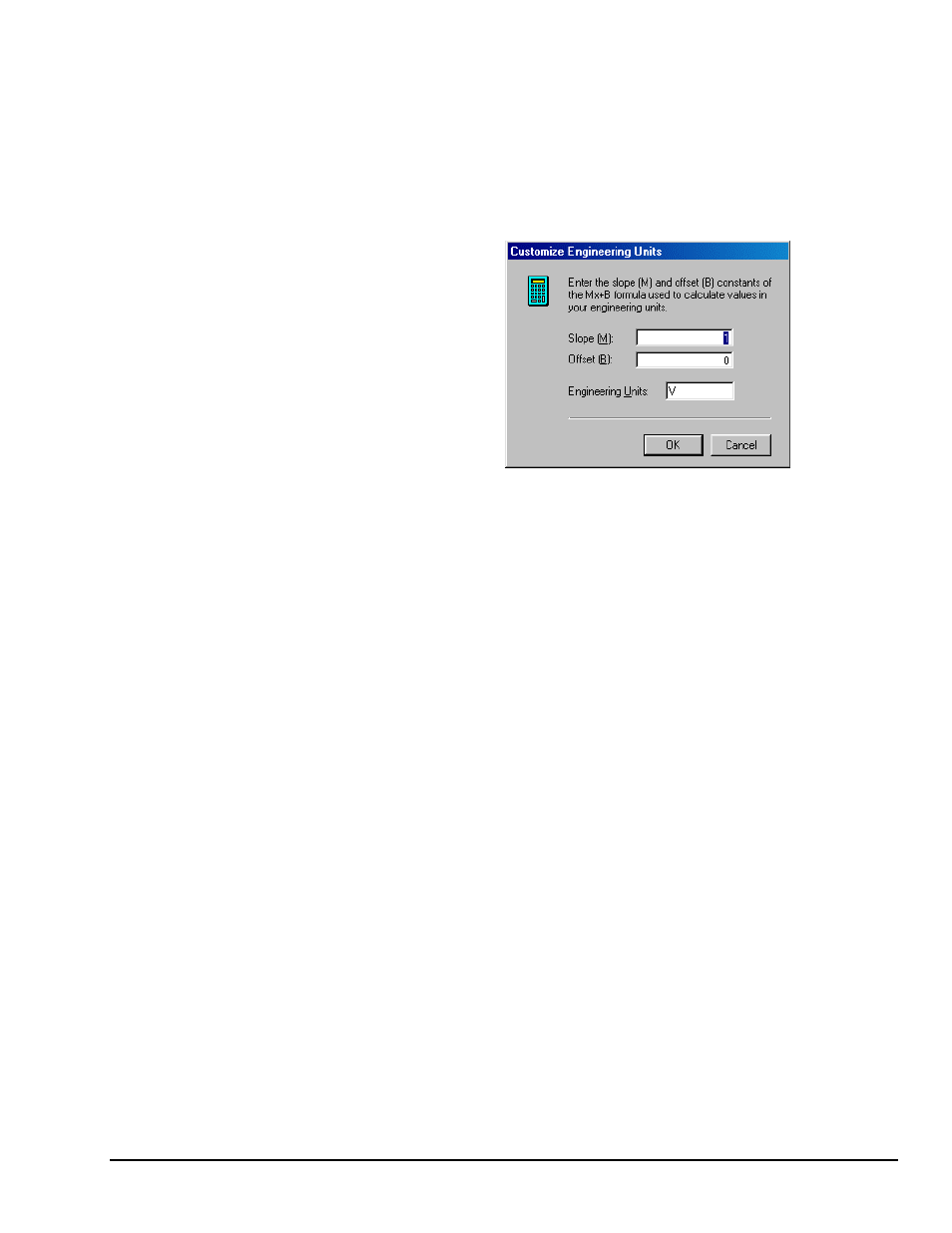Measurement Computing WavePort rev.3.0 User Manual
Page 63

WavePort User’s Manual
09-29-00
WaveView 6-11
• Label. This column contains a descriptive name for the input channel. By default, it contains a label
that is similar to its channel number, but this can be changed to any combination of 8 characters. Click
on the desired cell, and type in the desired label name. This column does not have a selection list
above the spreadsheet and does not allow selecting multiple blocks of cells.
• Units. This column allows you to change the voltage scale setting of each analog channel displayed
when the Scope option is selected. When a cell is selected, a selection box gives you a choice between
volts (V) or millivolts (mV). You can also enter user units and mX+b scales from this point. Making a
selection sets the choice into the individual cell or block of cells. This option has no effect on the
Digital Input channel.
From the mX+b dialog box, you can
enter values for m and b components
of the equation that will be applied to
the data. There is also an entry field
that allows you to enter a label for the
new units that may result from the
mX+b calculation.
• Auto Zero (32-Bit WaveView Only). Auto-zero is used to null out any DC offset that might be present
in a channel. WaveView nulls out the offsets of all channels set to “Yes” in the Auto Zero column,
providing the channels are enabled (“On”).
The following options depend on your actual WaveBook configuration.
• LPF On (WBK12/13, WBK14, WBK16). This column allows you to include or exclude the low-pass
filter from a channel. When selecting a cell, the selection box above the spreadsheet allows “On” or
“Bypass” to enable or disable the filter or block of filters. In WBK14 applications, LPF On allows you
to select an external filter. Double-clicking a cell in the LPF On column will cycle through the available
options.
• LPF Cutoff (WBK12/13, WBK14, WBK16). This column allows you to set the low-pass filter cut-off
frequency for the selected channel(s). If you enter an inappropriate cut-off frequency, the software will
round up or down to the next appropriate frequency for your particular hardware. Since the WBK12/13
filters are assigned to banks, setting one channel of a bank will also update the others.
• LPF Type (WBK12/13, WBK14, WBK16). This column allows you to configure the low-pass filter for
the selected channel(s). When selecting a cell or block of cells in this column, a selection box above the
spreadsheet may or may not appear, depending upon your particular hardware. If the selection box
appears, it will display the appropriate low-pass filter selections (such as “Elliptic” or “Linear” for the
WBK12/13) allowed by your hardware. Double-clicking a cell in this column will toggle the filter-type
status. A change in the low-pass filter type for one channel will appropriately update any other affected
channels.
• HPF Cutoff (WBK14, WBK16). This column allows you to set the high-pass filter cut-off frequency
for the selected channel(s). When a cell is selected, a selection box above the spreadsheet will display
the appropriate cut-off frequency selections (such as “0.1 Hz” or “10 Hz” for a WBK14 or “DC” and
“10 Hz” for a WBK16) to configure the filter(s). Double-clicking a cell in this column will toggle the
cut-off frequency status. A change in the high-pass filter cut-off frequency for one channel will
appropriately update any other affected channels.
